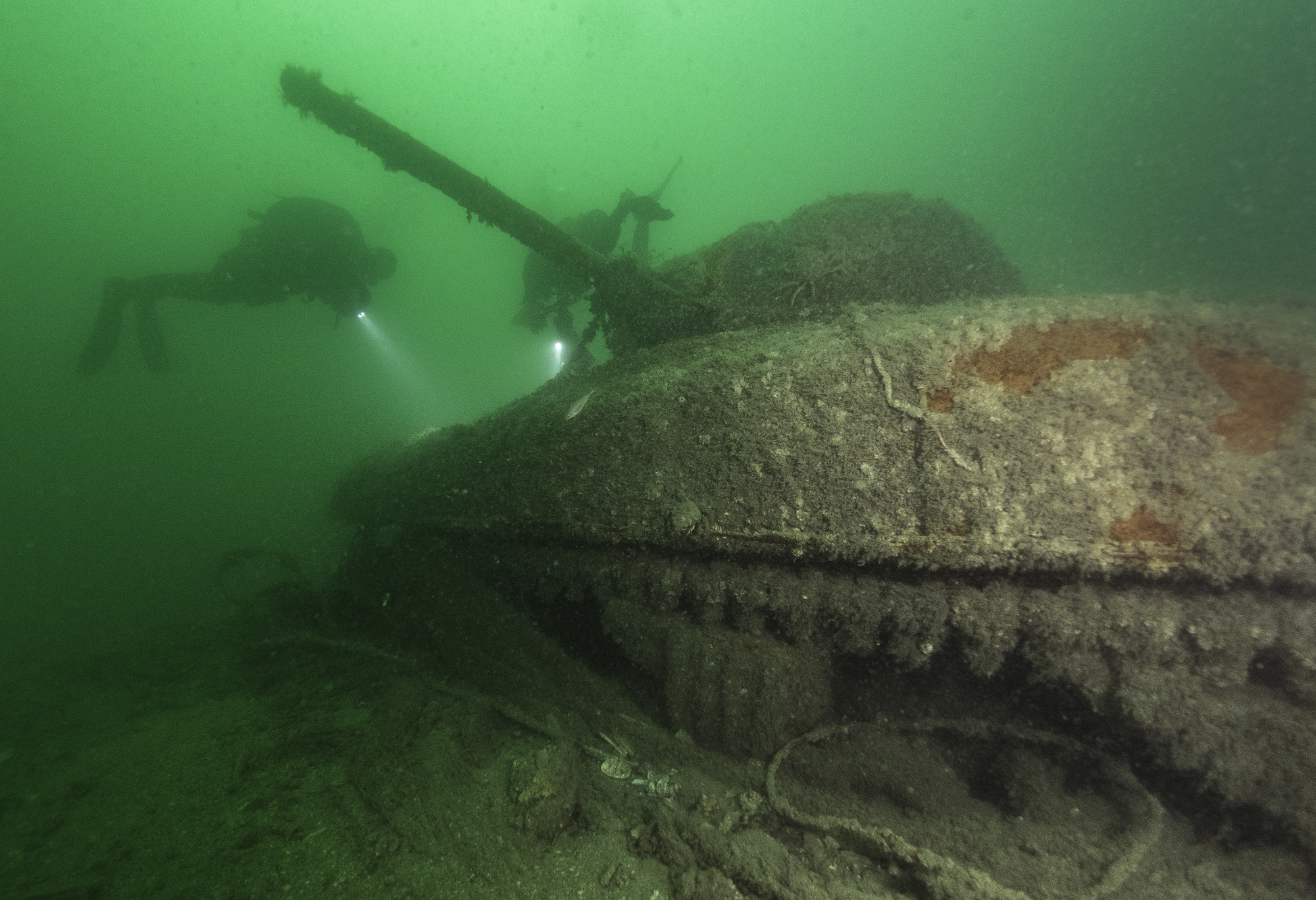
- Home
- Immersion on the wrecks of the Normandy landings
- Transporting and caring for troops
A variety of vessels
From ocean-going ships to small units
Several types of units were used by the Allies to transport troops. Large transport ships, the Landing Ship Infantry (LSI), of which there were 55 on D-Day, were mobilises to bring troops in large numbers into the vicinity of the beaches. They also transported smaller units (LCA, LCP), from which the troops could then land on the beaches. Other intermediate-sized units, the Landing Craft Infantry (LCI), numbering 248 on D-Day, were able to cross the Channel themselves while having a draught shallow enough to approach the beaches and unload soldiers.
In addition to the units constructed specifically for D-Day, many troop transports had been requisitioned by the Allied navies. The British LSIs, for example, were pre-existing liners that were converted into assault transports for the operation. Several freighters and liners were also used as hospital ships.
Two hospital ship wrecks
Only two of the Normandy landing wrecks correspond to vessels that were once used as hospital ships. The cargo ship War Hector, built in 1918 in Seattle for the Norwegian government, was sold to the Royal Navy during the Second World War. It was initially used to transport equipment in the Mediterranean before being resold to the Norwegian Shipping and Trade Mission of Oslo. Renamed Norfalk, it became a hospital ship. After years of faithful service, it ended up striking a mine on 20 July 1944, while being towed toward Omaha Beach to be scuttled as a blockship.
In a similar fashion, the British liner Amsterdam served first as a troop transport. Notably, it carried the US 2nd Ranger Battalion tasked with the assault on 5 June 1944, of the German batteries at Pointe du Hoc. It was later converted into a hospital ship. Its career ended on 7 August 1944, having left Juno for Southampton with 258 wounded, 60 personnel of the Royal Army Medical Corps, 102 crew members and German prisoners on board, it struck two mines on the port side under the engine room. The majority of the patients were evacuated but the ship eventually sank, taking with it 106 people (55 wounded, 30 crew members, 10 RAMC personnel, 11 Germans).
Two lost troop transports, fortunately, with few casualties
The Empire Broadsword
Avec des vestiges encore conservés sur plus de 12 m de hauteur, cette épave constitue l’une des épaves les plus impressionnantes du Débarquement. Ce Landing Ship Infrantry (LSI) américain est lancé en 1942 sous le nom de Cape Marshall. Réquisitionné par le Ministry of War Transport britannique, il est affecté à la classe Empire et renommé Empire Broadsword. Dès le 5 juin 1944, il quitte l'Angleterre et prend part à la première vague de débarquement en transportant pas moins de 540 soldats et 18 barges de débarquement pour l'assaut de Sword Beach. Un mois plus tard, le 2 juillet 1944, alors qu’il manœuvre pour débarquer 110 marines, il heurte deux mines qui provoquent une explosion entre les cales n°4 et n°5. L’arrière du navire se brise avant que l’ensemble ne gîte sur tribord puis coule, faisant 170 blessés et 7 victimes.
Today, acoustic mapping of this site reveals a wreck broken into two large sections lying to starboard. Details visible on the acoustic image, and also visible to divers, confirm the identification of this ship based on the shape of the masts with their spreaders, the presence of davits for launching the LCAs, etc.
The Susan B. Anthony
This liner launched in 1930 by the Grace Line under the name SS Santa Clara, met an end that was nearly more disastrous. In mid-1942, it was refitted, reassigned to the US Navy as a troop transport and renamed the Susan B. Anthony, in honour of a feminist activist who blazed the trail for women’s suffrage in the United States. After participating in the invasion of Morocco (late 1942 – mid 1943), and then Sicily (July 1943), it contributed to preparations for Operation Neptune by transporting troops and equipment from America to Europe.
On 7 June 1944, while approaching Omaha Beach with 2,288 soldiers on board, it struck a mine that exploded under the no. 4 hold. Captain Gray ordered the troops to move to stabilise the ship, but a fire broke out. A fire-fighting tugboat, the Pinto, secured the ship alongside to contain the fire while the men were evacuated. The ship eventually sank but with no casualties. Today, divers can explore this wreck, lying on its port side, its remains spread out over 160 m.
Partners and authors
Associated media
Open Media Library

Archival photograph of the Norfalk, see wrecks Normandy Region

Multibeam echo sounder survey of the Norfalk

Stem of the cargo ship Norfalk

Frames of the hull of the cargo ship Norfalk

Multibeam echo sounder survey of the liner Amsterdam
360° Video of the wreck of the Landing Ship Infantry Empire Broadsword

Multibeam echo sounder survey of the Landing Ship Infantry Empire Broadsword
Multibeam echo sounder survey of the stern of the Empire Broadsword

A cannon located on the stern of the Empire Broadsword

One of the masts of the Empire Broadsword

Bow deck of the Empire Broadsword

The USS Susan B. Anthony at Oran (Algeria) on 5 July 1943

Multibeam echo sounder survey of the liner Susan B. Anthony

